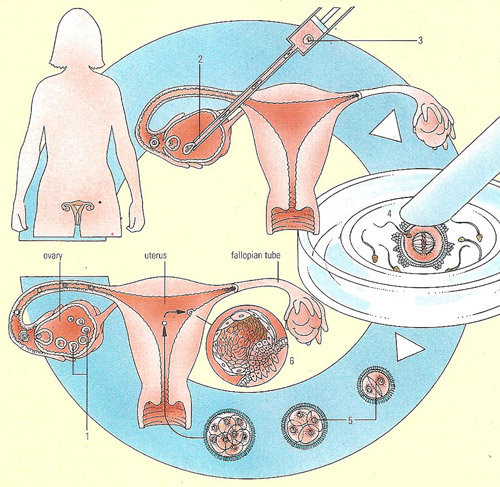in-vitro fertilization (IVF)

The mother, or egg donor, is given hormone treatment to cause many ovarian follicles to develop (1). While the ovary is observed through a laparoscope, a long needle (2) is inserted into each follicle , which is then sucked up (3) and transferred to a petri dish where sperm are added (4). The cells are monitored under a microscope. As the zygote (5) divides to a stage where it consists of 16 cells, it is introduced into the mother's uterus through a long plastic tube so that it can implant in the wall (6) and progress to full term in the usual way.
In-vitro fertilization (IVF) is the use of artificial techniques that join an ovum with sperm outside the woman's body to help some infertile couples to have children of their own. The basic technique of IVF involves removing ova from a woman's ovary, fertilizing them in the laboratory, and then inserting them into the woman's uterus.
In zygote intrafallopian transfer (ZIFT), a fertilized ovum (zygote) is returned to the Fallopian tube, from where it makes its way to the uterus. In gamete intrafallopian transfer (GIFT), the ova are removed, mixed with sperm, then both ova and sperm are inserted into a Fallopian tube to be fertilized in the natural setting. These IVF procedures result in live births in up to 20% of cases.
The worlds first "test-tube baby" was born in Britain in 1978.


